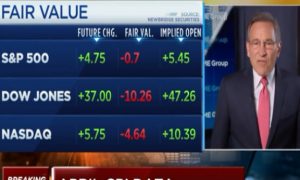A U.S. debt-ceiling showdown, recession fears and renewed banking jitters didn’t get stock-market investors worked up this week. Major indexes ended April on a positive note, while the Cboe Volatility Index a closely watched measure of expected stock-market volatility sometimes referred to as Wall Street’s “fear gauge,” closed Friday at a nearly 18-month low.
Read More:– Don’t make these common mistakes when starting a business
Called by its ticker, and sometimes referred to as Wall Street’s “fear gauge,” the VIX is an options-derived measure of expected S&P 500 index volatility over the coming 30-day period. On Friday, it closed at 15.78, its lowest finish since Nov. 4, 2021, according to Dow Jones Market Data. That’s well below it’s long-run average near 20.
The S&P 500, Dow Jones Industrial Average and Nasdaq Composite rose Friday. The blue-chip Dow, up 2.1% in April, saw its biggest monthly gain since January, while the Nasdaq logged its highest finish since September.
The subdued VIX is partly due to surprisingly buoyant economic data, argued Christian Mueller-Glissman, head of asset allocation research within portfolio strategy at Goldman Sachs.
Read More:– I’m a Financial Pro Who Works With Millionaires: Here Are 3 Saving Tips Everyone Should Know
Despite widespread fears of a U.S. recession, the data has held up, he said in a Friday research newsletter. Employment and consumer spending remain strong, while historical modeling shows the health of the labor market remains a key factor behind volatility in financial markets.
But with Goldman looking for the U.S. economy to expand by a below-consensus 1.6% in 2023 and then slow from there, subdued volatility is unlikely to last, according to Mueller Glissman.
The VIX futures curve — a line drawn across VIX futures contracts prices — slopes upward, signaling investors expect volatility to rise over time.
Read More:– Nearly 25% of Warren Buffett’s Portfolio Is Invested in These 3 Attractive Dividend Stocks
The cost of puts — options that give the holder the right but not the obligation to sell an underlying asset at a set price by a certain time — has gone up relative to the price of calls — options that allow the holder to buy an underlying asset at a set price by a certain time. Puts can be purchased to bet that a security will fall in price; while calls can purchased to bet in the opposite direction.
“The market is starting to be more worried about downside risk than upside risk,” Mueller-Glissmann said. “Convictions levels are low, but people are feeling bearish.”
Investors have also questioned whether the VIX is still relevant, particularly amid a surge in trading of option contracts with one day or less left until they expire. Traders call these products “0DTEs,” short for zero days until expiration.
Read More:– How can you use a short-term business loan?
Cboe on Monday unveiled a new 1-day VIX gauge, called the Cboe 1-day Volatility Index, designed to track implied volatility based on soon-to-expire options. That gauge, which has yet to build a record, has traded in a range between 15.59 and 8.55 this week, and was near 13.45 late Friday.































